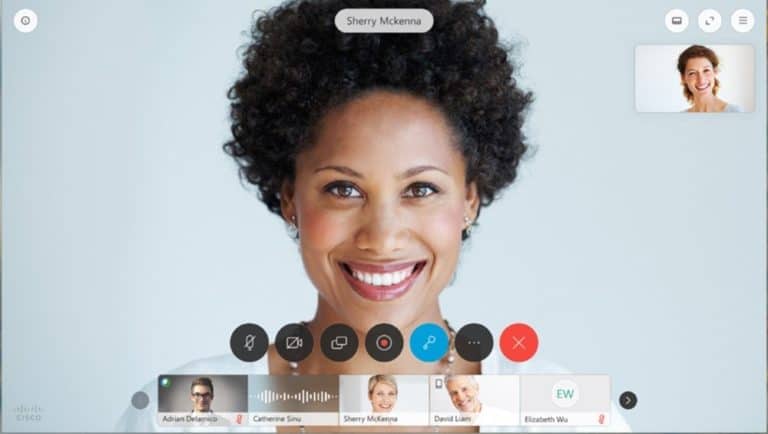Cisco focuses on smart software in an attempt to compete with rivals such as Slack and Microsoft Teams. The company wants to upgrade WebEx, a collaboration tool for businesses, by combining facial recognition technology with automatically generated personal profiles.
The purpose of the extension is to enable users to identify meeting participants based on their profile. This may include the current job title, previous work experience, expertise or even hobbies.
According to Amy Chang, senior vice president of Ciscos collaboration branch, a new generation of digital capabilities is transforming business collaboration. She is thinking of innovations such as machine learning and cloud computing. We have to behave like a gigantic start-up to prevent us from no longer being able to participate in the market in ten years’ time, says Chang.
Accompany
Last year, Cisco acquired Accompany for $270 million in Chang’s relationship-intelligence-focused business. Together with a small team of former colleagues, consisting of former Google engineers and developers, she built algorithms to automate the process of creating extensive personal profiles based on numerous public online resources. A project that she now continues under the wings of Cisco and integrates into WebEx.
WebEx
According to The Wall Street Journal, WebEx has over 130 million users per month and supports 360 million meetings per year. At least 95 percent of the Fortune 500 companies use WebEx. The global market for cooperation between companies is also on the rise: in 2018 the market grew by 11.8 percent, to more than 2.4 billion dollars. This is in line with the expected 3.2 billion turnover in 2021, according to IDC’s figures.
The focus on improving WebEx with Artificial Intelligence-based services is part of a broader strategy, according to The Wall Street Journal. In this way, Cisco would like to generate more revenue from recurring software sales in order to be less dependent on one-time hardware sales. A strategy that seems to work on the basis of the latest figures.
Cisco reported in February a fiscal profit for the second quarter of 2.82 billion U.S. dollars, with a sales increase of 4.7 percent to 12.45 billion U.S. dollars. Turnover from business sales of switches, routers and other network equipment increased by 6 percent, to $7.13 billion. On the other hand, the application industry with video conferencing and other products grew by 24 percent, to $1.47 billion.
Microsoft Teams
Nevertheless, some critics question whether Cisco can still catch up. For example, Microsoft claims that more than 500,000 organizations are using its two-year-old collaboration tool Microsoft Teams for chatting, messaging and meetings at work. So are 91 Fortune 100 companies. Recently, Microsoft Teams has been added with new features, including custom wallpapers for videoconferencing and live subtitles for meetings. In addition, the limit for the number of viewers via a special broadcast function has been increased to a maximum of 10,000.
Slack
Slack is also making progress. Founded in 2013, the company grew by 50 percent last year, accounting for a total of 10 million daily active users. Slack would have 65 Fortune 100 companies and 85,000 paying customers. It positions itself, in its own words, as a central hub with more than 1,500 apps. In addition, since its establishment in 2016, Facebook Workplace, with more than two million users and 150 companies with more than 10,000 employees, has also become a serious competitor.
Chang says it is not impressed by the growth rates of its competitors. For example, WebEx would not have impressive growth rates, because the number of users is simply already very large. A few million new WebEx users would therefore appear proportionately as a small growth rate.
Related: Cisco simplifies meetings with new AI features for WebEx
This news article was automatically translated from Dutch to give Techzine.eu a head start. All news articles after September 1, 2019 are written in native English and NOT translated. All our background stories are written in native English as well. For more information read our launch article.